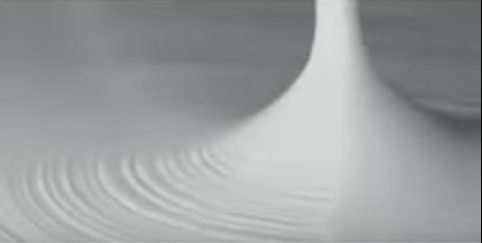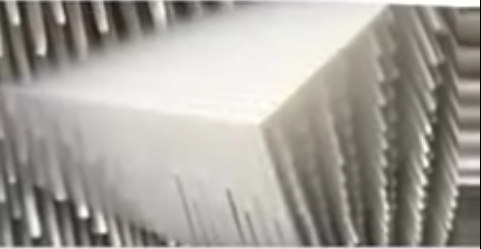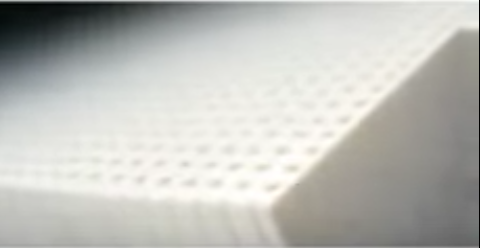Natural Latex Mattress Buyer's Guide
How To Sort Through All The Different All Natural Latex Options --
And Get The Best Possible Deal
Table Of Contents:
1. All Latex Mattresses Aren't Created Equal
2. So What Do I Recommend? For Both Comfort and A Chemical Free Sleep, Go With Natural Latex
3. How Natural Latex Is Made
4. Other Advantages Of Natural Latex
5. How To Shop For A Latex Mattress

From what we hear from customers, there are a few different reasons behind the rising interest in latex mattresses. One theme we hear is from people interested in a "green" mattress option. This can include those that want a mattress made of all natural ingredients, those wanting to buy a mattress made from sustainable materials, or those that want to assure that their bed isn't off gassing any unnatural materials into their bedroom.
And while there are other materials that offer some of these "green" qualities, such as organic cotton or wool, none of them have the same buoyant and elastic characteristics that a latex mattress offers. Cotton mattresses, much like futon mattresses, pack down over time and get much firmer, and while wool makes a very nice comfort layer, you still need a good mattress "core" or base, to layer the wool on top of.
Another group of folks find Natural Latex interesting because of its hypo-allergenic, anti-bacterial, and anti-dust mite qualities. These organisms do not thrive in natural latex.
And finally, there are a fair amount of people that just haven't been able to find a comfortable mattress. Often they have specific pain issues they are trying to address, but others have tried all sorts of other mattress options and just can't get a good night's sleep.
And the truth is, that despite all the hype in the industry about latex, it really is a great option for these different kind of customers. There is no "greener" mattress than an all natural latex mattress, and it can be a very effective choice for those that have chemical sensitivities or other allergy concerns.
The most important reason latex has become the current "hot" product, though, is that it is a uniquely comfortable sleep surface. Latex is both a very dense surface, but also because of its elastic properties, still has a yielding, giving, and conforming quality. So for those that just haven't been able to get a good night's sleep or have unrelieved pain issues, a latex mattress is a top of the line alternative that has a very different feel, offers unparalleled comfort and support, that may well do the trick..
All Latex Mattresses Aren't Created Equal

Whipped latex ready to pour into mattress cores.
Why should you care about this? Well, if you are interested in a latex mattress because of its "green" or natural properties, you would want to make sure that the "latex" mattress you are looking at is made of natural, plant derived latex (rubber tree sap) and not chemicals. Further, while natural and synthetic latex may look the same under the microscope, in real life they have somewhat different feels and, some claim, differing levels of durability (although, to be honest, I've heard the natural and synthetic latex purveyors both argue that their product is more durable, and not having a degree in chemistry I just don't which side has the more compelling argument).
So What Do I Recommend? For Both Comfort and A Chemical Free Sleep, Go With Natural Latex
After looking at a variety of natural and synthetic latex mattress offerings, based on pure comfort I strongly prefer natural latex. I'll be honest with you though, when you start to look critically at latex you step into very deep water. While I've mentioned the basic difference in latex, natural vs synthetic, you also get into how the latex was actually manufactured.
There are two methods, the original Dunlop method, which is the longstanding, traditional method and primarily used for making natural latex, and the newer Talalay method, which is primarily used for making synthetic latex (although, to add to the complexity, you can find some natural Talalay latex, but a real premium price to natural Dunlop latex).
Without trying to put you to sleep, here is a very short description of how latex is made -- understanding this a bit will make you much more informed consumer and give you a much better understanding of just what to look for when buying a latex mattress:
How Natural Latex Is Made

Natural latex being harvested from rubber tree.
As I mentioned above, there are two methods of vulcanization used to produce solid latex. The oldest technique, and the most time tested, is the Dunlop method, which yields a more supportive and slightly firmer natural latex. The newest technique, called the Talalay process, is essentially the same general method, except that it includes a flash freeze step which suspends smaller air bubbles in the mold immediately before it is rapidly heated to solidify the latex, resulting in a slightly softer, less supportive feel.
Here's my bottom line: natural latex made using the Dunlop method has a somewhat firmer and more buoyant feeling that Talalay latex. And since Dunlop latex is less expensive than Talalay, you get a cost savings as well. So for these reasons, I prefer my latex natural and Dunlop. One caveat: you can get a bit of the best of both worlds if you make a combo mattress with a core of Dunlop and a top layer of Talalay (the Dunlop "core" gives you the good support and basic comfort, and the softer Talalay top gives a softer, more luxurious feel, right up next to you).
Other Advantages Of Natural Latex
Another plus of natural latex is that it doesn't sleep hot, and dust mites and other microbial organisms do not thrive in the material due to its unique organic properties. Natural latex is also durable, resists packing down, and forming body impressions as well. Because of its buoyant and highly elastic qualities, it allows you to easily roll from side to belly or side to back, which prevents disruption of natural sleep patterns.

Latex mattress core with pincore needles
By the time the mattresses are sold to the consumer, though, there isn't a whole lot of difference in price between the synthetic or synthetic blend latex beds and the all natural latex beds (just better margins for the manufacturers by using synthetic latex). But since there is a real difference in the comfort, hypo-allergenic and eco-friendly properties of the mattresses, I believe that all natural latex mattresses are by far the superior product and a better value.
How To Shop For A Latex Mattress

Finished natural latex mattress core with pincore holes.
- I prefer 100% natural latex over synthetic or blended beds -- natural latex just has a livelier, more responsive, and has more elastic qualities than the synthetic or blended mattresses. Natural latex just has a more comfortable feel. In addition, natural latex, is durable, resists packing down and forming body impressions. It offers other advantages that the synthetic Latex doesn't have, such as the naturally anti-dust mite, anti-mold and anti-mildew qualities, the hypo-allergenic qualities, and it is a chemical free bed that will does not off gas.
- Look for simplistically designed, uncomplicated natural latex mattresses. This will minimize problems with shifting layers and migration of contents. Avoid mattresses with excessive zones or "cut up" designs.
- Dunlop natural latex on the bottom, Talalay natural latex on the top, if you are going to go for a mattress with multiple layers. The Dunlop layer provides a good foundation or substrate layer, offering support, while a Talalay latex top layer offers a luxurious feel to the mattress.
- Look for a breathable outer covering, preferably a wool blend that contains no chemical fire retardants. Also, the covering should not be excessively thick or quilted, so that you remain in close contact with what you are paying for...latex.
Buy from a reputable company, with easily accessible, independent third party reviews, so you can read what other people are saying who have already purchased latex mattresses from this company. That way, you can avoid the litany of trials and tribulations I often hear about from people who have spent a lot of money on a mattress, only to find that if it isn't working out for them they have no recourse.
I hope this sort of thing never happens to you, but I hear all the time from people that have had a bad experience with mattress retailer and/or company -- and feel they have been really taken advantage of. Sometimes it is that they can't get their money-back from the retailer for their brand new mattress that, unfortunately, just isn't working out for them. To late they learned that most retailers offer no comfort guarantee, and those that do offer something offer only an in-store "merchandise credit" -- less a return cost, etc. And since there is often not another mattress at that store that really is of interest, all too often this is just lost money.
So please, don't fall into these sort of traps that other customers have fallen into. Look for third party verification of a mattress retailer, so you know upfront if this is someone who will take care of you, and not fall back on the "standard of conduct within the mattress industry" that may leave you high and dry.
In my business, I have attempted to provide people with this sort of transparent information about our company by both giving all our customers the option of posting a review of their experience with our products, and also by being a member of the Better Business Bureau (BBB) where customers can hold us accountable and our customers can verify the types of complaints we get and whether we have resolved them. I am very proud we have earned continued to earn an A+ rating from the BBB since 2001.
After my own disappointing experiences with mattress manufacturers (not living up to their agreement, shutting down operations suddenly with no provision made for past customers, etc.), I can only urge you to try to look for this sort of third party verification of a retailer before you spend what can easily be thousands of dollars on a new latex mattress. If it doesn't work out for you, or you have warranty issues, it is really important that you picked a dealer that will make things right so you don't end up getting stuck.
- Look for a solid warranty, at least 10 years, with full replacement guarantees for at least several years. A reputable dealer will back up their product. You should be able to easily obtain a copy of the warranty.
- A trial period that allows for returning the mattress should you decide it just doesn't work for you. At least 60 days, preferably 90 or more, is a respectable time frame to give you time to evaluate a mattress thoroughly.
- Freebies and extras that encourage you to buy, are nice to have. Latex pillows and other products that further enhance your mattress will only add to your experience.